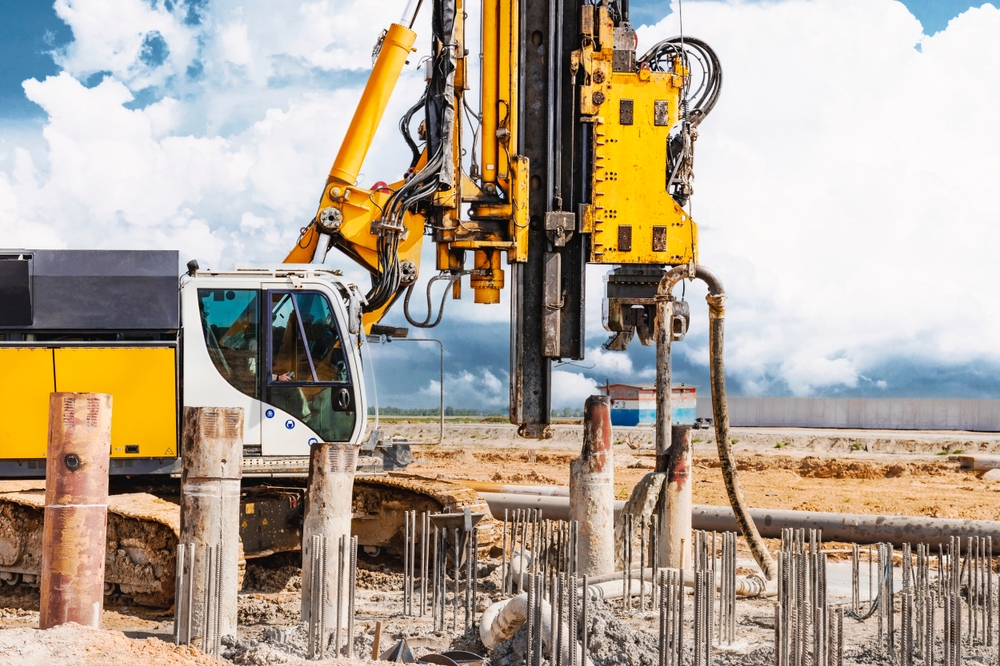The construction industry’s choice of materials can make or break a project. You want products that are strong, durable and reliable. The secret to achieving this might lie in steel tubes and pipes, whose manufacturing processes and versatile applications have revolutionized industries far and wide. Whether you’re a contractor or engineer needing pipe and piling supply, understanding the intricate details of steel tubes and pipes can aid in your quest for excellence. Let’s delve into what makes these materials the heart of modern infrastructure and industry.
Sculpting The Future: How Bent Steel Pipes & Tubes Shape Our World?
From the handrail you hold onto as you ascend a stairway to the streetlights illuminating your path at night, bent steel pipes and tubes are everywhere. Here’s how they contribute to various products:
- Garden Machinery: Enables efficient gardening tools and equipment.
- Vehicle Cabs: This creates a strong and durable framework.
- Rain Shelters & Canopies: Provides sturdy and protective structures.
- Stair’s Handrail, Ceiling Lights, Streetlights: Enhances urban architecture.
- Tractors, Open Space Structures Like Bench & Cycle Rack: Facilitates public convenience and agricultural advancements.
- Exercise Machines, Handles: Supports fitness and usability.
Inner Strength: The Technical Properties Of Steel Tubes
Steel tubes come with a blend of properties that make them the material of choice for pipe and piling supply:
- Elongation: Ability to stretch without breaking.
- Yield Strength: Resistance to deformation.
- Tensile Strength: Capacity to withstand stretching forces.
- Rigidity: Maintains shape under stress.
- Hardness: Resists scratching and wear.
- Visual Appeal: Aesthetic quality for visible applications.
- Weight: Offers the balance between sturdiness and manageability.

Inception to Reality: Steel Tube Manufacturing
The manufacturing of steel tubes is an intricate process. Here’s how:
- Bending: Achieving various shapes through specialized techniques.
- Cutting: Precision cuts for specific dimensions.
- Welding: Joining pieces to create complex structures.
- Heat Treatment: Enhancing properties like hardness and toughness.
- Finishing: Ensuring visual appeal and protection.
Beyond The Ordinary: Exploring Steel Tubes Types
1. Mild steel, a low-carbon steel variant, is highly popular in various industries, especially where large quantities of material are needed without extreme strength requirements. Here’s why:
- Composition: Contains a small percentage of carbon, making it malleable and ductile.
- Strength: Offers sufficient strength for most common applications.
- Weldability: Easily welded, allowing for complex structures.
- Cost-Effective: Generally cheaper, making it suitable for large-scale projects.
- Applications: Often used in car bodies, garden machinery and other areas where extreme strength is not critical.
2. High-carbon steel is known for its superior strength and hardness, making it a choice for more demanding applications. Here’s an in-depth look:
- Composition: Contains a higher carbon content, contributing to its strength.
- Strength: Significantly stronger and harder than mild steel.
- Brittleness: This strength comes at the cost of increased brittleness, making it less ductile.
- Welding Challenges: Requires more careful handling when welding due to its composition.
- Heat Treatment: Often requires heat treatment to achieve desired properties.
- Applications: Ideal for tools, dies, springs and other parts where strength and wear resistance are paramount.
Perfect Match: Why Pipe and Piling Supply Manufacturers Recommend Steel Tubes?
Steel tubes are perfect for various applications:
- Lightweight Construction: Ideal for modern architectural needs.
- Heavy/Medium-Heavy Engineering: Supports robust structures.
- Agricultural Machinery Manufacturing: Enhances farming technology.
- Metal Structure Construction: Guarantees stability.
- Industrial Machine Manufacturing: Ensures efficiency and longevity.
- General Fitting Construction, Forest Management Machinery, Funiculars, Railway Fittings: Steel tubes are versatile from general fittings to specialized applications.
Combining Art And Science: Steel Tubes Bending Methods & Processes
Understanding the bending processes is crucial before obtaining the best-quality pipe and piling supply:
- Mandrel Bending: Ensures uniform bending without collapsing.
- Heat Induction Bending: Uses heat for bending, allowing more intricate shapes.
- Ram Bending: Simple and cost-effective, suitable for different applications.
- Roll Bending: Used for large-radius bends.
Multiple Options: Unveiling the Processing Techniques
1. Laser cutting is a precise and efficient method of shaping steel tubes.
- Process: Utilizes a high-power laser to melt or vaporize the material, allowing intricate cuts.
- Precision: Offers incredible accuracy, enabling complex shapes and patterns.
- Applications: Ideal for automotive parts, decorative items and any design requiring detailed cuts.
- Considerations: Requires specialized equipment and expertise to handle correctly.
2. Welding is a fundamental process for joining steel components, including tubes.
- Process: Employs heat and pressure to fuse two pieces of steel, often adding filler material.
- Strength: Creates a strong joint that can withstand significant stress.
- Applications: Used in construction, automotive and industrial applications where joined tubes are required.
- Techniques: Various methods exist, such as TIG, MIG and arc welding, each with unique advantages.
3. Milling shapes steel tubes by removing material.
- Process: Utilizes a rotary cutter to remove material in a controlled manner.
- Versatility: Allows shaping, drilling and cutting in various ways.
- Applications: Ideal for creating slots, holes and other intricate features in steel tubes.
- Considerations: Requires specialized machines and expertise for accurate milling.
4. Lathing shapes steel tubes by rotating them against a cutting tool.
- Process: The tube rotates while a stationary cutting tool shapes it.
- Symmetry: Ideal for creating symmetrical objects around a central axis.
- Applications: Used in manufacturing axles, shafts and other cylindrical objects.
- Limitations: Primarily suitable for round or cylindrical shapes.
5. Flattening is often used to create flat surfaces on steel tubes.
- Process: Employs pressure or rollers to flatten sections of the tube.
- Applications: Used in manufacturing flat parts like brackets and connectors.
- Considerations: Must be controlled carefully to avoid unwanted deformations.
6. Mechanical Marking, Trimming and Thread-Cutting add finishing touches to steel tubes: Read the following points to learn more:
- Mechanical Marking: Imprints information or designs onto the surface.
- Trimming: Removes excess material for a clean finish.
- Thread-Cutting: Adds threads for screwing into other components.
- Applications: Essential for finalizing products, adding information or ensuring proper fitment.
Embrace Cutting-Edge Solutions For Your Next Project
Steel tubes and pipes shape our world from the simplest household applications to the most complex industrial needs. The precise manufacturing, bending and various processing options make them indispensable in modern construction and engineering. Look no further if you’re looking for a top-quality pipe and piling supply. Choose Bigfoot Pipe & Piling, a name synonymous with integrity, quality and innovation.
